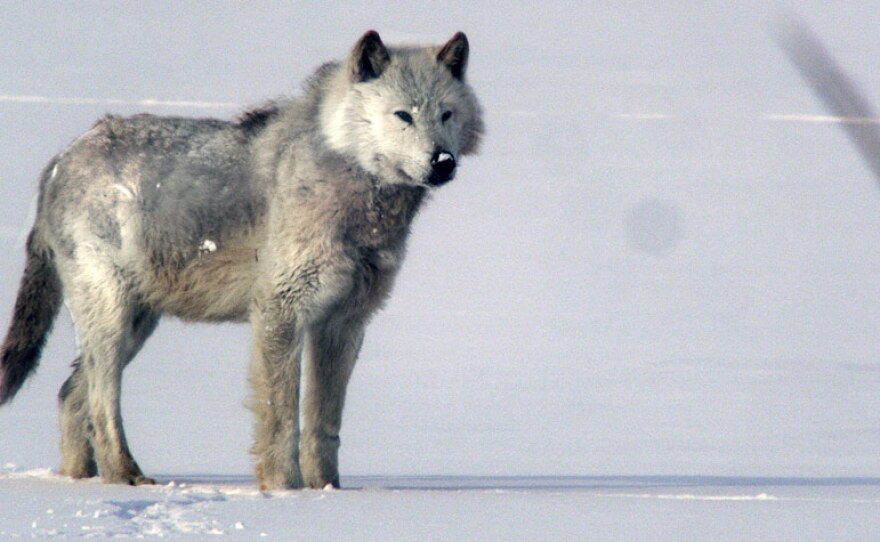It has been going on for thousands of years, the ancient rite of wolves hunting buffalo. But with the virtual extinction of these two species from the North American plains during the continent’s westward expansion, there is just one place left where the timeless battle continues uninterrupted: in Northern Canada’s Wood Buffalo National Park.
The centuries-old struggle of life and death between the continent’s largest land mammal and its longtime predator and why both have survived are revealed when NATURE presents “Cold Warriors: Wolves And Buffalo.”
Straddling the province of Alberta and the Northwest Territories, Canada’s largest park – five times the size of Yellowstone National Park – was established in 1922 to protect the free-roaming buffalo herds.
It’s here that wildlife filmmaker Jeff Turner, equipped with the addition of an aerial camera, was first able to capture a wolf hunt from beginning to end in the remote wilderness.

Having this airborne advantage was a great help to Turner, given that a wolf pack can often range more than 30 miles a day to find prey to hunt. They can run for hours waiting for a chance to make a kill, but the buffalo also have amazing endurance, even the calves. Turner says he’s witnessed chases that have gone on for 20 miles.
“Cold Warriors: Wolves And Buffalo” begins in winter when the wolf pack is most visible and working as a cohesive unit, traveling and hunting together. Turner is following an average-sized pack of about eight wolves led by a large alpha male.
A wolf pack can best be described as a family with the alpha wolves, the father and mother wolf, being the leaders and most of its members their offspring of various ages.
For the pack to survive, its leaders must provide food and security as well as teach their young to hunt buffalo. The goal is to try to kill one every week or so, despite the buffalo’s 20-1 advantage in size over the wolf.
Buffalo are ideally suited for winter and so well insulated that snow lying on their massive bodies doesn’t even melt. But the deep snow of winter poses a problem for them when they are being chased by a pack of wolves; the buffalo have to break trail, which tires them faster than their predators.

The aerial camera documents the time-honored hunting strategies employed by the wolves and the evasive tactics of the buffalo, which start with the pack trying to get the herd to run so the wolves attack from behind.
The buffalo hold their ground and face the wolves in standoffs that can often last for days, but eventually they start running, with the pack in hot pursuit trying to break up the herd.

Scattering through the bush is another buffalo tactic, which as it causes wolves to split up. But the large alpha male sets his sights on a yearling calf and, in a risky maneuver, stops and wounds the 600-pound animal. The large alpha then steps back and waits for the calf to die.

The filmmaker remarks, “I never realized until now that one wolf could bring down a buffalo. It’s remarkable what a strong and determined leader can do for his pack.”

The spring and summer pose more challenges to the pack than to the herd, with an alpha female giving birth to pups who need to be fed and their den defended. This means there are fewer opportunities to roam in search of prey and, sadly, most pups die of starvation at this time.

Although the buffalo calves make for easier targets, the mothers are extremely protective of their young and sometimes hide in the forest to make it harder for the wolves to isolate a single calf. If the pups survive and grow bigger, they’ll leave their den in autumn and join the pack as the hunting cycle continues.

Turner concludes that the biggest challenge to the wolves is not the strength of their leaders, but whether their ancient habitat will remain remote enough with the Alberta Oil Sands, the world’s third largest crude oil reserve, directly upstream from Wood Buffalo National Park.
